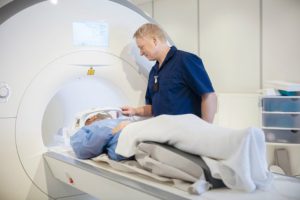Pregnancy Ultrasound: Foetal Morphology
Around 18-20 weeks, an ultrasound will be performed which is commonly known as the foetal morphology scan. This ultrasound checks your baby to make sure he or she is developing normally.

Pregnancy Ultrasound: Foetal Morphology
Around 18-20 weeks, an ultrasound will be performed which is commonly known as the foetal morphology scan. This ultrasound checks your baby to make sure he or she is developing normally. The sonographer will look for any abnormalities in growth. The baby’s size will be measured and heartbeat registered. The location of the placenta will also be determined and the amniotic fluid volume measured.
As with any ultrasound, this is a very safe technology. Ultrasound scans do not utilise any ionising radiation, so they are completely safe for both mother and baby.
During the foetal morphology ultrasound, the sonographer will look at all of your baby’s growing internal organs. The heart, stomach, and kidneys are observed to check for signs of normal development in shape, size, and function. The head will be looked at by the sonographer to make sure there are no problems. The circumference of the foetus’ head is also typically measured as part of the typical check for size and proper growth. An important part of your baby that will be checked during this ultrasound is the spine. Abnormalities such as spina bifida are very-well detected by this scan. Other problems that the sonographer will be scanning for include gastrointestinal defects, some congenital heart problems, hydrocephalus (excess fluid in the brain), and missing or shortened limbs. In the event an abnormality was identified, further scans and tests would be required. Some abnormalities are non-threatening for the baby or resolve themselves at further stages in the baby’s growth. You can speak with your physician or sonographer about any concerns you may have.
While taking inventory of the baby’s healthy development, the sonographer will also be confirming the due date of the baby, making sure there are no multiple births (as these would be readily apparent by this time), and possibly determining the sex of the baby. The gender can usually be ascertained during this scan, but it is completely up to you whether or not you want to find out then if you’ll be having a boy or girl!
Read our articles and FAQs
We’re delighted to provide updates on the latest medical imaging technology and answer your most frequently asked questions about our services.









